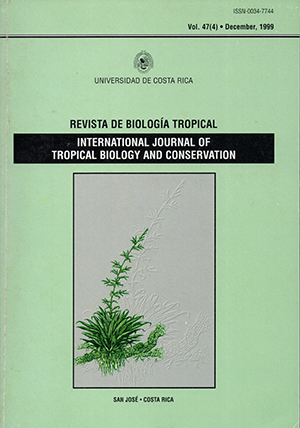Abstract
Guazuma ulmifolia is as popular reforestatíon free all over Latin America. It is characteristíc of the initial stages of the secondary sucession and presents porentíal utility in the restoring of degraded areas. There is no information about fruil, seed and seedling morphology, which is of fundamental importance for identífica! ion, extraction, management and seed germination as well as for the characterization of post-seminal development and normal seedling pattern. To obtain such information, external fruit, and external and internal seed structures were studied considering shape, size, micropile and embryo localization, and tegumentar structures. Al! stages of this work were conduced in the Universidade Estadual Paulista (UNESP), Campus of Jaboticabal city. The fruits were collected in a mixed plantation in Jaboticabal city, State of Sao Paulo, Brazil. For the biometric study eight repetitions of ten fruits and eight repetitions of 100 seeds were utilized. For seed internal traits study, 50 seeds were drenched in a distíll;d water, cut, and observed with a scanning electron microscope and a stereomicroscope. For post-seminal study ten repetitions of seven seeds were scarificated chemically with sulphuric acid during 50 min, and placed to germinate in a culture medium, al 300C, and eight hours of photoperiod. We found elipsoid, woody, indehiscent, pentacarpelar fruits, with a mean lenght of2 2.6 1 mm (diameter 24.88 mm) and 64.0 seeds per fruit. Seed shape varies, mean length is 3.07 mm (width of2.36 mm).The seed is bitegumented, tegmic, with a continuous, axial and curved embryo. The germination is epigeal and the seedlings are fanerocotiledoneus. Drawings of all stages are included.##plugins.facebook.comentarios##

This work is licensed under a Creative Commons Attribution 4.0 International License.
Copyright (c) 1999 Revista de Biología Tropical
Downloads
Download data is not yet available.






